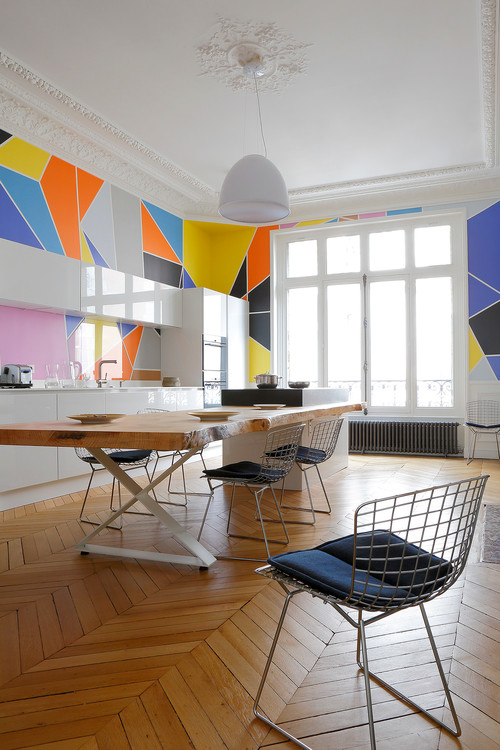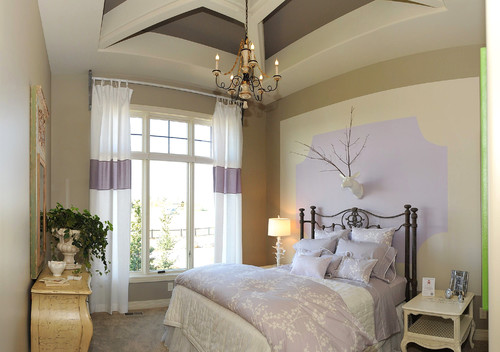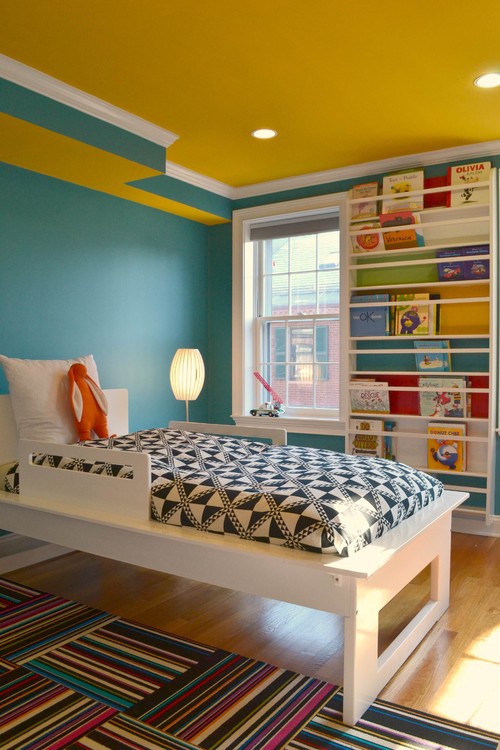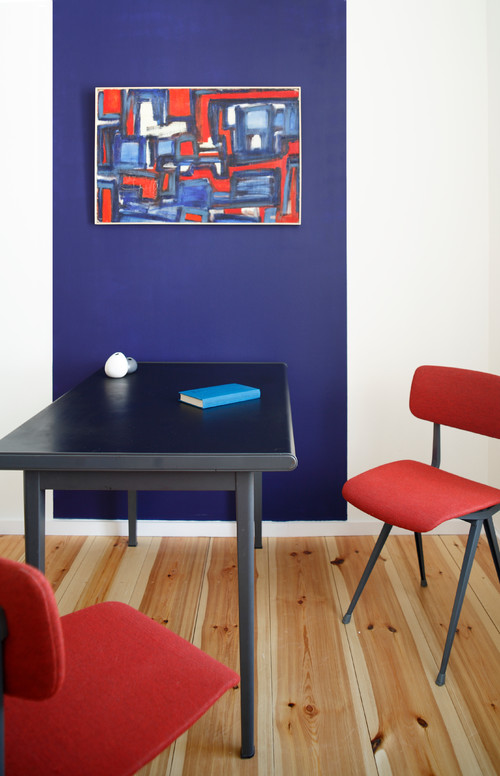Want a Fun New Paint Project? Try Colorblocking
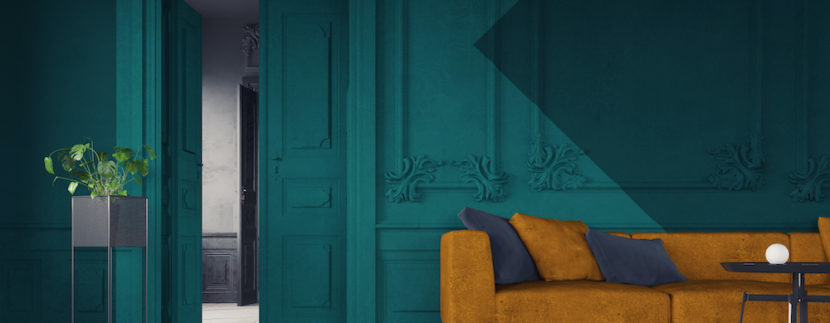
Want a Fun New Paint Project? Try Colorblocking.
If you love bold shades and geometric shapes, give colorblocking a try. This paint method is a fun, fresh way to rehab your rooms.
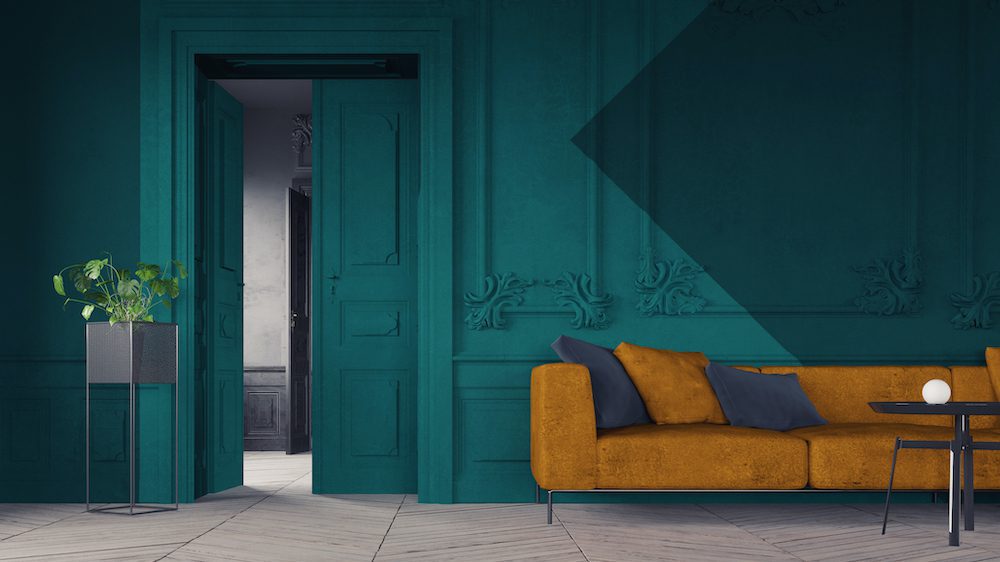
vicnt / Getty Images
Painting a room’s walls is the easiest DIY makeover under the sun—but want to try something a bit bolder and fun? Consider colorblocking instead.
“Colorblocking is about creatively pairing two or more shades—or blocks of color—to make a unique statement on a wall, ceiling, door, or other home surface, and it’s a trend that can be accomplished by DIYers and pros alike,” says Dee Schlotter, a PPG senior color marketing manager.
“These geometric fields of color, which are usually separated by neutral zones, can serve to punctuate or establish a color plan for your space, sort of like accent walls taken to an extreme,” adds Debra Kling of the eponymous color consulting firm.
And if you see hints of modern art or connections to the fashion world in colorblocking, you’re on the right track. Kling considers Mondrian to be the master of this technique, and colorblocked frocks were debuted by Yves St. Laurent in the 1940s and have been trending ever since.
Here’s more about colorblocking, including how-to’s, shade pairings, and where to try this technique in your home.
Gather the gear
Painter’s tape is critical for this task as you’ll need to section off the various colors you want to use and create clean lines, says Schlotter.
“Using a high-quality roller and a smaller paint brush to ‘cut in’ to the smaller details or corners of the colorblocked design will also help ensure a polished look,” she adds.
Relearn the color wheel
You may love green and yellow together, but not every color pairing is a harmonious one.
___
Watch: 5 Budget-Friendly Home Improvement Projects You Can Do in a Day
____
“To colorblock in a way that’s ultimately pleasing to the eye, you’ll need to understand the relationships between colors, whether they’re complementary, monochromatic, or analogous,” says Kling.
For some help, think back to grade school and the ol’ color wheel from art class. Complementary shades are ones that live on opposite sides of the wheel, like red and green or blue and orange—and these hues are excellent combos when you’re choosing a scheme that’ll punch up your walls.
Get some virtual help
If using a color wheel is making your head spin, get some help from the pros.
“PPG has virtual color consultations to help you choose paint for colorblocking and other home projects,” notes Schlotter.
Once you’ve shared photos of your space and color preferences, experts can text, email, or FaceTime their recommendations and assist with ordering swatches or buying paint.
Match shades with moods
Bright shades behind a den’s bookcases are energetic, while softer tones create a sense of calm.
“If you want to instill restfulness in your bedroom, consider a halfway-up-the-wall technique by painting the upper portion in a warm hue and the bottom in a darker, moodier version,” says Schlotter.
You can also create a headboard in a bedroom with colorblocking or make an impact by defining shapes behind bedside tables or dressers.
Let loose in kids rooms
“Colorblocking works very well in a child’s room because it adds personality and more visual interest beyond using just a single color,” says Schlotter.
Blocked primary colors on walls are typical in kids rooms, but other combos can also playfully decorate the ceiling, bookcases, and floors.
“For a playroom, consider painting a geometric shape like a diagonal across an entire wall with a bright color on one half and a neutral on the other,” Schlotter adds.
Save paler shades for higher up on the walls, and use darker ones, like navy, lower to the ground as they’ll serve to hide dirt and scuffs that’ll no doubt appear here.
Highlight unusual features

Alexandra Ribar
Colorblocking can also create a focal point by showcasing molding or other architectural detail.
“Leanne Ford recently put this technique into play on an arched doorway project using a sandy pink hue to create a playful stripe and her go-to Delicate White (PPG 1001-1) to brighten the walls behind it,” says Schlotter.
Create a room with blocked color
Colorblocking with bold paint can create rooms where none existed before by marking off spaces for different tasks. Pull up a desk and chair to a bold purple shape and a home office is born—or do the same near your kitchen for a breakfast nook or in a hallway to make a cozy reading corner.
The post Want a Fun New Paint Project? Try Colorblocking appeared first on Real Estate News & Insights | realtor.com®.

